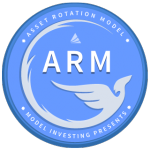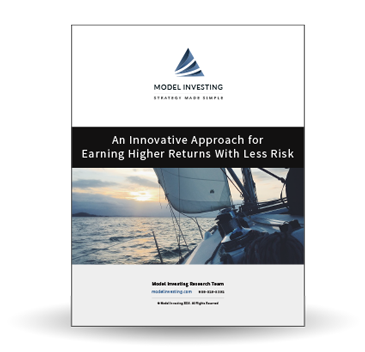ARM Tutorial

The Asset Rotation Model (ARM) helps you determine which asset class (stocks or bonds) is most likely to outperform each month . It utilizes a dynamic approach to asset allocation, allowing you to earn higher returns while taking on less risk.
This tutorial will guide you through applying the ARM’s recommendations to your own personal portfolio.
Getting Started
The Asset Rotation Model is updated monthly. Updated recommendations are accessible with a premium subscription and are available on the first trading day of each month. They represent proper positioning for the duration of that month.
Updated recommendations can be accessed through the Current Recommendations page, available at the top of our home page once you log in. An email is sent out each month to alert you when updated recommendations have been posted.
To get the most out of the ARM, you will want to update your holdings immediately upon receiving the latest recommendations.
Note: If you invest primarily through you employer sponsored 401(k) plan, or the Federal Government’s Thrift Savings Plan (TSP), please see those specific models. The recommendations provided by those models utilize similar logic to the ARM, and are customized to provide more tailored guidance.
How to Use
The most straightforward way to leverage the ARM is to follow it exactly, as it rotates between stocks (SPY) and bonds (AGG).
- If the ARM selects SPY – the SPDR S&P 500 ETF, sell any previously established positions and move those funds into SPY. Use ticker symbol “SPY” to find this fund through your online brokerage account.
- If the ARM selects AGG – the iShares Core U.S. Aggregate Bond ETF, sell any previously established positions and move those funds into AGG. Use ticker symbol “AGG” to find this fund through your online brokerage account.
The ARM frequently maintains its position in a particular asset class for months or years at a time. If the ARM’s recommendation does not change from one month to the next, no updates to your account are required.
You will need to monitor both the ARM and your positions monthly.
Additional Considerations
The historical backtested performance of the ARM is based on following the model exactly, maintaining exposure to only one asset class at a time, and moving the entire portfolio according to each month’s recommendations. While the results speak for themselves, we understand that you may be hesitant to fully embrace an investment strategy that you’re not familiar with.
If that’s the case, we suggest using only a portion of your overall portfolio to follow the ARM’s recommendations. As you see the results over time and become more comfortable with the model’s performance, then consider applying the strategy to a greater percentage of your total portfolio.
Advanced Users
For more sophisticated investors it is not necessary to restrict your investments to only SPY when the model selects SPY, or AGG when the model selects AGG. The key concept to understand is that the model is using these two funds as proxies for stocks and bonds. When the ARM selects SPY, it’s an indication that stocks in general are performing well and are where your portfolio should be positioned. When the ARM selects AGG, it indicates that stocks are in a difficult environment, possibly on the verge of a market crash, and that bonds are the best alternative at the time.
This means that you may substitute other forms of exposure to stocks when the model selects SPY, and other forms of exposure to bonds when the model selects AGG. Please note, however, that using different investments will result in your performance differing to some extent from that of the ARM.
Note: The ARM works in sync with the Sector Rotation Model (SRM). When the ARM recommends stocks, you can utilize the SRM to find and invest in the top performing sector(s) of the market.
Color Coding
On the Current Recommendations page you will find the latest ARM recommendation, and you will also find a table that ranks all the funds included in the ARM from best to worst. We have included this information for those who may wish to deviate slightly from the model’s recommendation, either for diversification purposes or other reasons. In the Complete Ranking Table, you will notice a color coding schema designed to alert you to the status of each option. The color coding is as follows:
| Key | |
|---|---|
| Green | Showing positive price performance and acceptable as an investment |
| Yellow | Acceptable as an investment but significantly better alternatives exist |
| Red | Not recommended at this time |
All items in green are acceptable investments, but we recommend you stick with the highest ranked options to achieve optimal performance.
As a final reminder, not following the ARM’s exact strategy and recommendations will result in returns that differ from the model’s historical and future performance.
This wraps up the ARM Tutorial.
If you have any additional questions, please reach out to us by using the Contact Us page or sending an email to support@modelinvesting.com.


